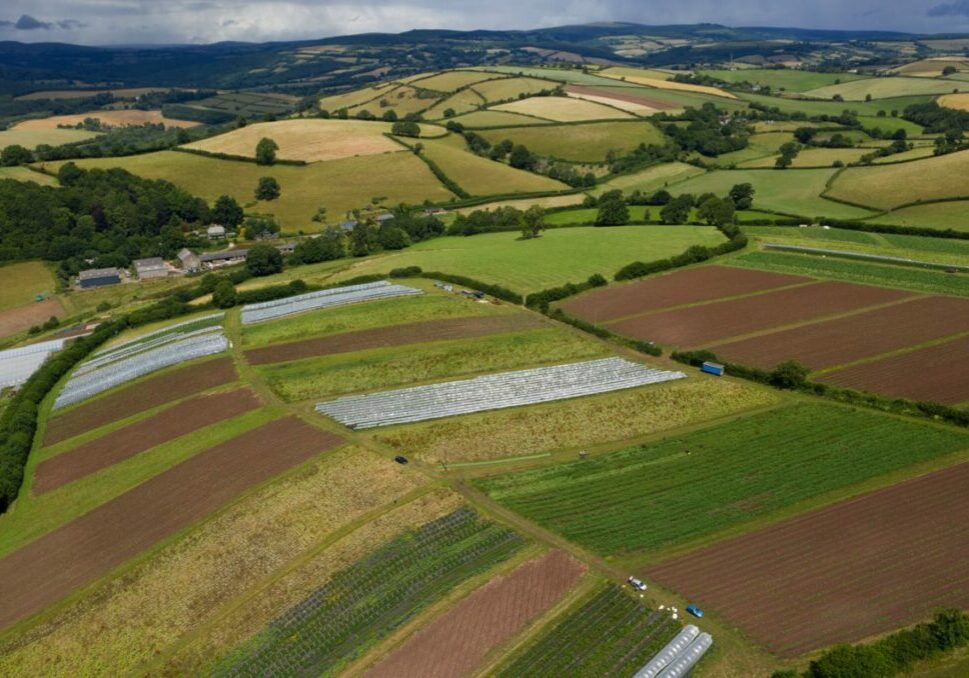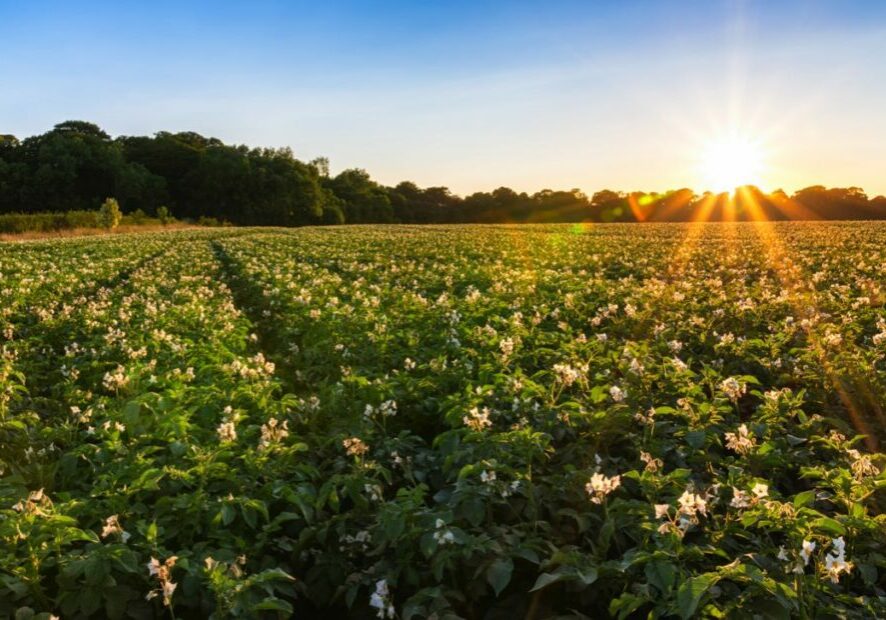Verdant, rolling hills clad in a patchwork of meadows, hatched with neat hedgerows and grazed by languid herds of piebald cows: it’s the stereotypical picture-postcard image of rural Britain. Scratch beneath the surface of this idealised vision, though, and you’ll discover a very different reality.
The truth is that many centuries of farming, particularly following a period of intensification in the mid-20th century, have transformed our countryside – with profound impacts on our biodiversity. Today, more than 70% of the UK’s land is used for agriculture.
And as field sizes have increased – along with the rise of modern farming methods, artificial fertiliser and pesticide use – many habitats and species have suffered.
The farmland bird index tells a stark tale: numbers of breeding farmland birds fell by 55% between 1970 and 2019, with species such as turtle doves, tree sparrows and grey partridges down at least 90%. At a worldwide level, the food and agriculture system drives 60% of nature loss.
Biodiversity isn’t the only victim. “Globally, the food system accounts for a third of greenhouse gas emissions,” explains WWF’s sustainable agriculture specialist Callum Weir, himself a former farmer. “And farming is the largest user of fresh water, it’s the largest driver of habitat conversion, and in the UK it’s responsible for over 10% of our territorial greenhouse gas emissions.”
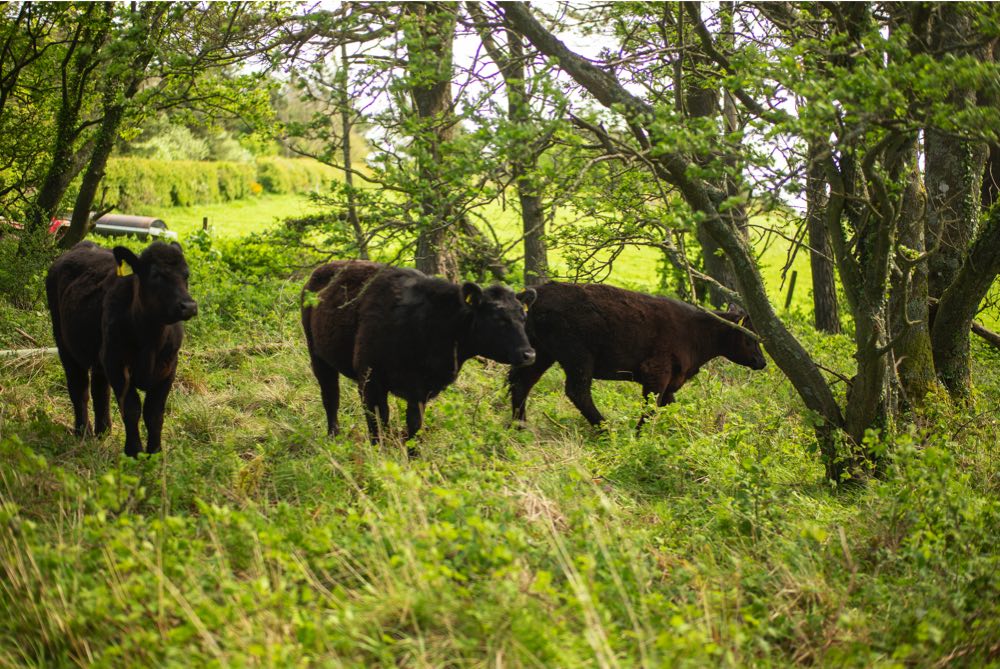
© DAVID BEBBER / WWF-UK
The infamous enteric emission – burping – of methane by cows isn’t the only agricultural driver of climate change. The loss of wild habitats to intensive farming, reductions in soil carbon storage, and emissions from manure and nitrogen-based fertilisers are also major contributors. Bear in mind, too, that farming’s impact doesn’t stay local.
In 2019, the UK imported some 2.1 million tonnes of soy-based animal feed. Soy can be grown on deforested land abroad and then fed to British-reared chickens and pigs. In other words, we offshore a significant proportion of our greenhouse gas emissions footprint.
It’s not just livestock farming that can be problematic, either – growing potatoes, for example, is extremely water-intensive and can cause damaging soil run-off and erosion.
It’s important to emphasise that we shouldn’t lay the blame on farmers. “Farming has a problem to solve – but farmers aren’t the problem,” says Callum. “They work hard, it’s not the most lucrative business, and they have to respond to the markets they supply.”
The science of soil
So to address the triple challenge – restoring nature, tackling climate change and producing nutritious and affordable food – we’re working to support farmers and help food businesses improve production methods.
“Farmers are climate and nature heroes,” says Callum. “They’re the ones facing these problems every day: dealing with less-productive soils, experiencing droughts, seeing those impacts first-hand.”
A new breed of farmers
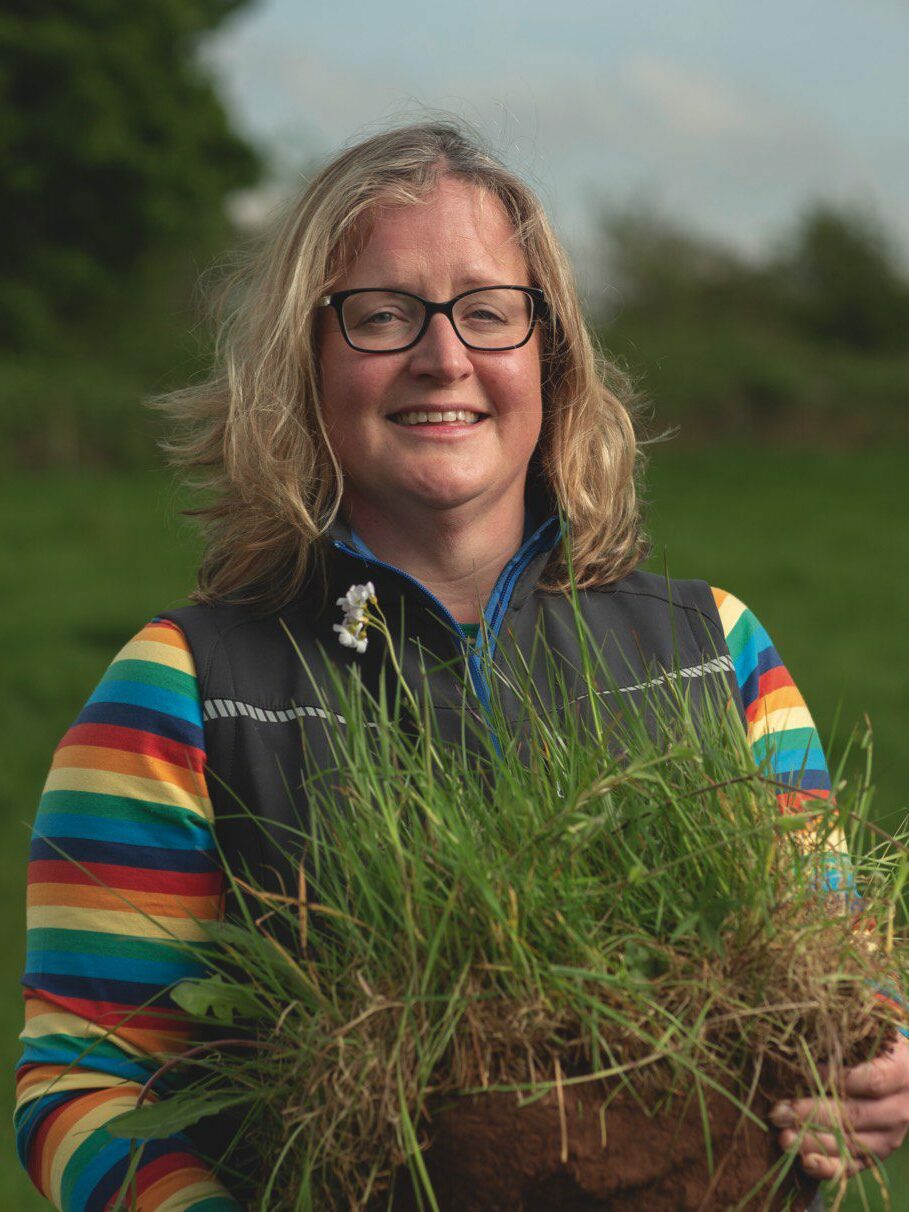
Heather Close
Heather raises beef cattle in south Ayrshire
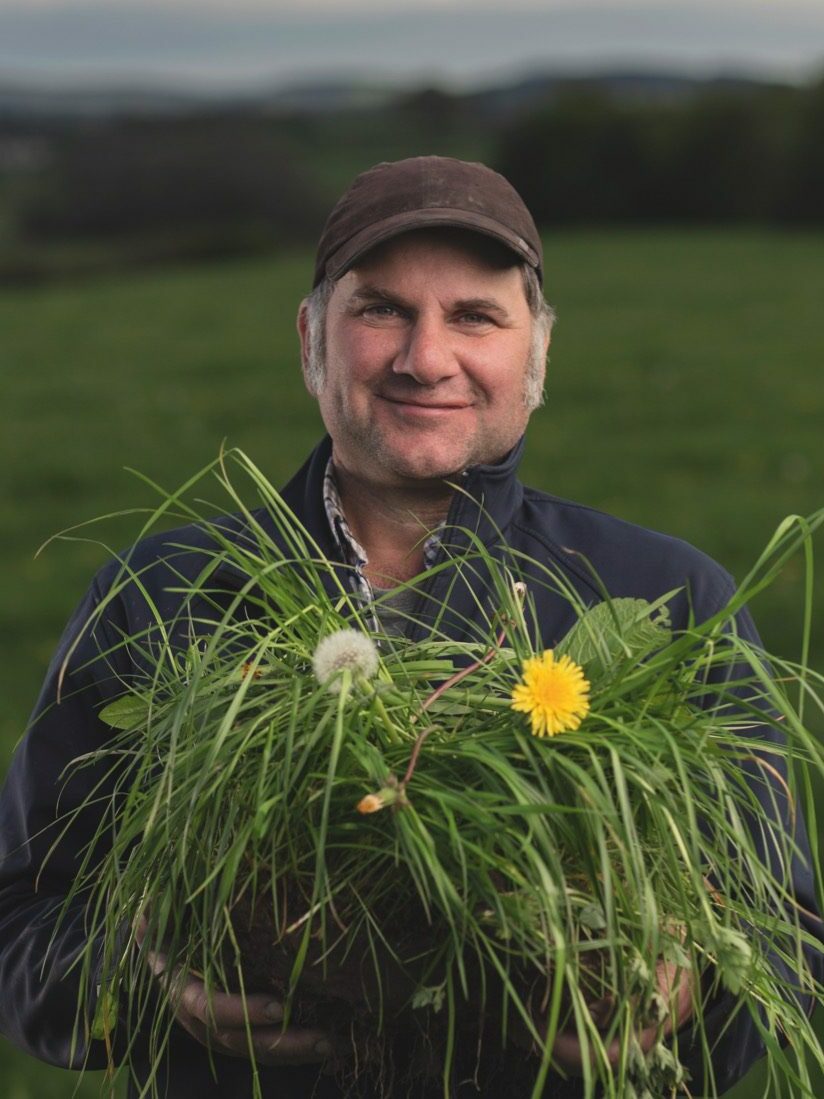
James Robinson
James runs a dairy farm in the Lake District
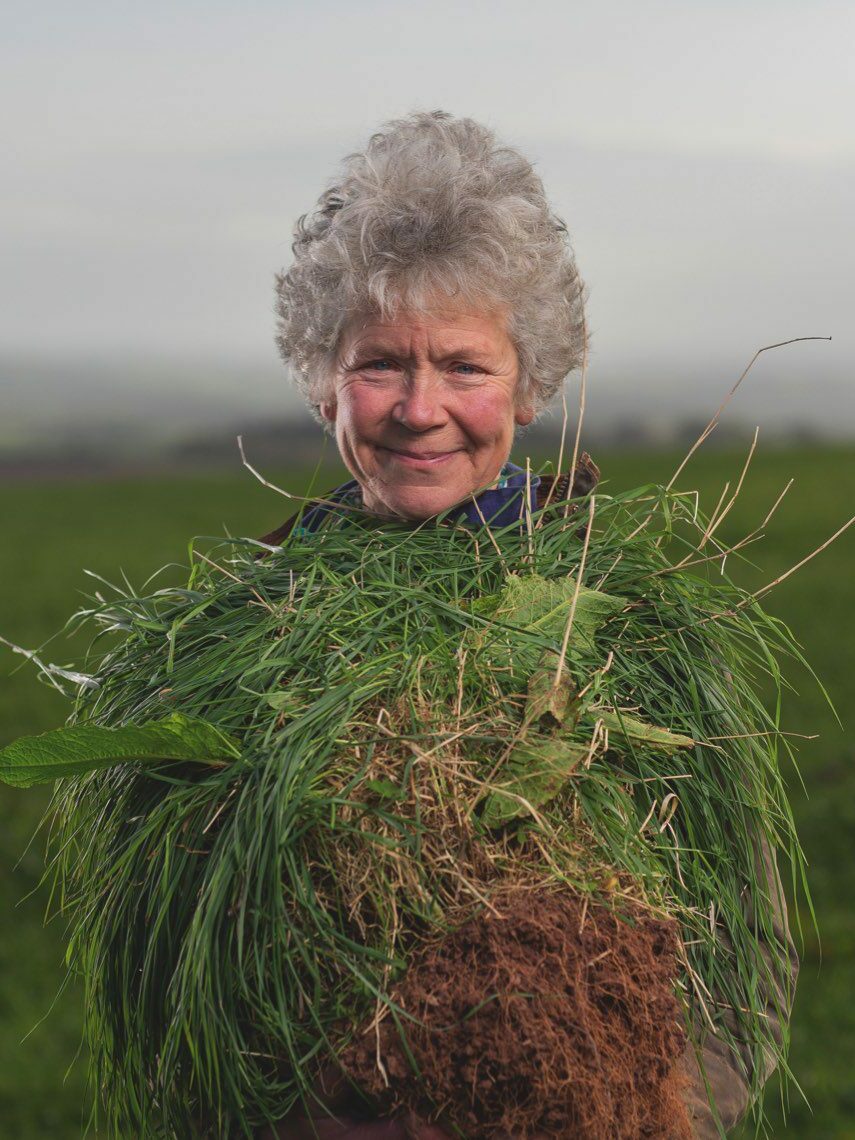
Denise Walton
Denise owns an organic farm in Berwickshire
We believe it’s possible to produce food sustainably through nature-positive farming, or regenerative agriculture. This involves understanding the individual context of each farm, nurturing soils and plant roots, maximising crop diversity, and encouraging rotational cattle grazing to nurture healthy grasses and cows.
“We need to move away from input-intensive farming – chemical-heavy, lots of fertiliser, lots of feed – towards systems that rely on biology and nature,” explains Callum. “Regenerative agriculture is about empowering farmers to enable that shift, because they know their farms and their ecosystems better than anyone else.”
That means listening to farmers’ concerns, needs and knowhow, as well as sharing ideas. “In the short term, we highlight the low-hanging fruit: clear win-win-wins – wins for nature, for climate and for farmers’ bank balances,” says Callum.
“For example, half of the fertiliser applied in the UK is not taken up by crops, but goes into water courses or the atmosphere. If we reduce this waste, farmers need less fertiliser – which is great for their bank balances as well as the environment.”
This isn’t chicken feed: the cost of total nitrogen waste from all agri-food sources in the UK is estimated at about £2.3 billion per year, equivalent to half of all agricultural profits. Then there’s the medium-term collaborative element. “We know that farmers learn best from other farmers, so we support that peer-to-peer knowledge exchange during conversations at the pub or the farm gate.”
Ultimately, to make this approach worthwhile for the farmer, the wider system needs to support regenerative agriculture. So we’re promoting the benefits of this approach for climate, nature and people. And we engage with governments and work in partnership with influential businesses such as Tesco to look at their respective roles in restoring nature in food production.
“WWF supports regenerative agriculture because it’s a ground-up movement in two ways,” Callum concludes. “First, because it’s about creating a soil ecosystem that supports biodiversity and improves water quality, impacting the wider environment. But it’s also ground-up because regenerative agriculture has been developed by farmers themselves – it’s not a concept that organisations such as WWF have dictated to farmers, but something farmers have taught us.”
The future of farming
With your help, we’ll scale up our work with farmers and local communities to demonstrate how farming can be transformed at landscape scale, and share this experience to overcome policy and funding barriers. We’re focusing on two sites, covering both landscapes and seascapes…
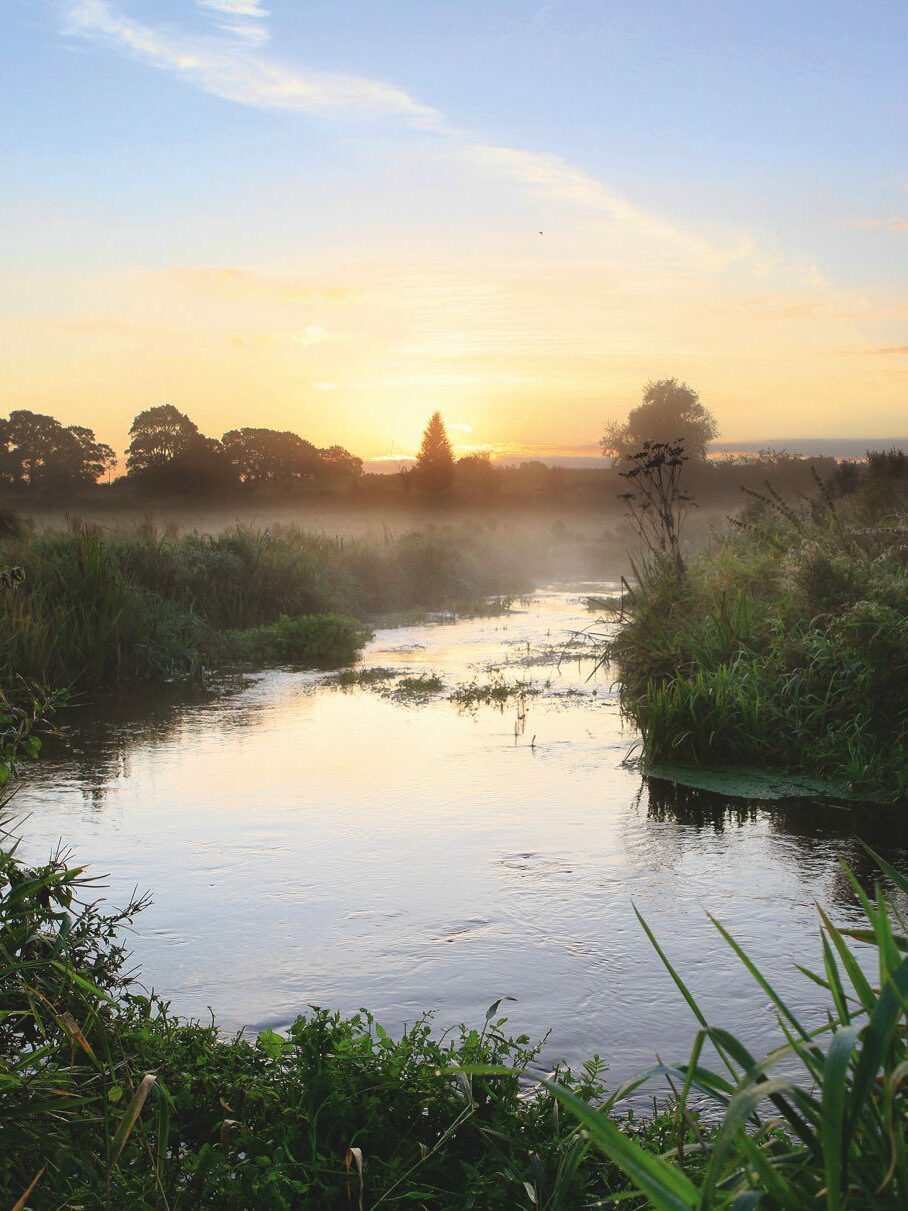
Norfolk, East Anglia
This region is home to more than a quarter of England’s chalk streams – a globally scarce and wildlife-rich habitat that’s under threat. Together with partners, including Norfolk Rivers Trust, we’ll build on previous work to help create a vibrant, mixed landscape of productive, regenerative agriculture alongside flourishing habitats and species at landscape scale. We’ll support farmers to improve farmland, using nature-based solutions such as silt traps to stem field run-off, slowing and filtering water to reabsorb sediments, pesticides and nutrients that would otherwise pollute streams.
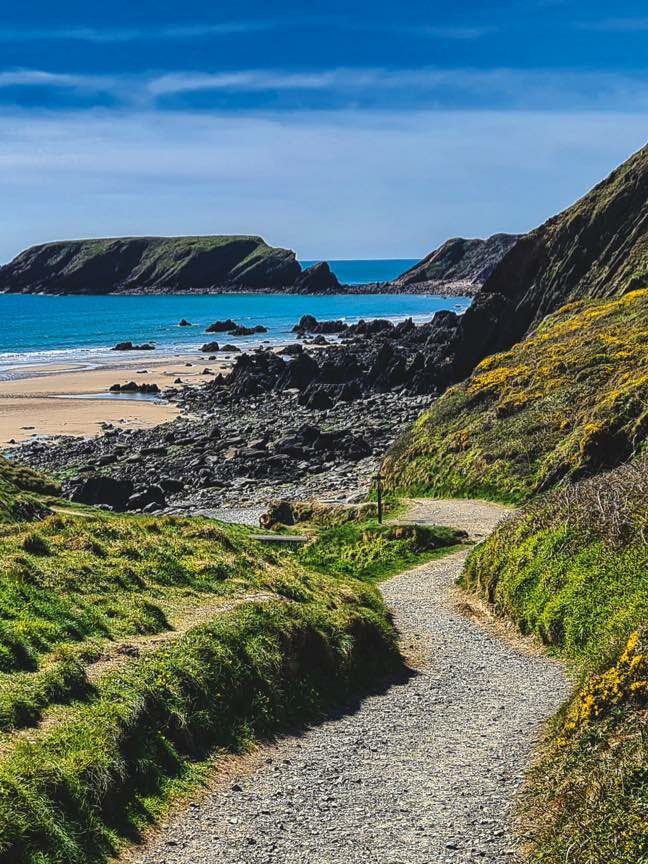
Pembrokeshire, Wales
The diverse habitats of the south-westernmost corner of Wales are all intrinsically linked – from seagrass to ancient woodland, moorland to farmland. Yet coastal water quality is affected by pollution from land, largely from agriculture. We’ll be working with farmers, fishers and other partners to demonstrate how to reach net zero emissions while restoring nature and enhancing sustainable livelihoods. The resulting clean rivers, reconnected woods and natural grasslands will benefit the local community and millions of visitors alike.
Become a nature hero
Will you give an extra gift today to support us as we scale up regenerative farming across the UK? Here’s how an extra gift could help:
£10
could help sow 10 square metres of new wildflower meadow on farms or other sites managed for wildlife
£20
could help our vital work with partners to conserve threatened iconic UK species
£50
could help buy 2.5 metres of hedgerow for regenerative agriculture
£100
could support our advocacy work, urgently calling on UK governments to set out their decarbonisation strategies for agriculture and land use
More to explore
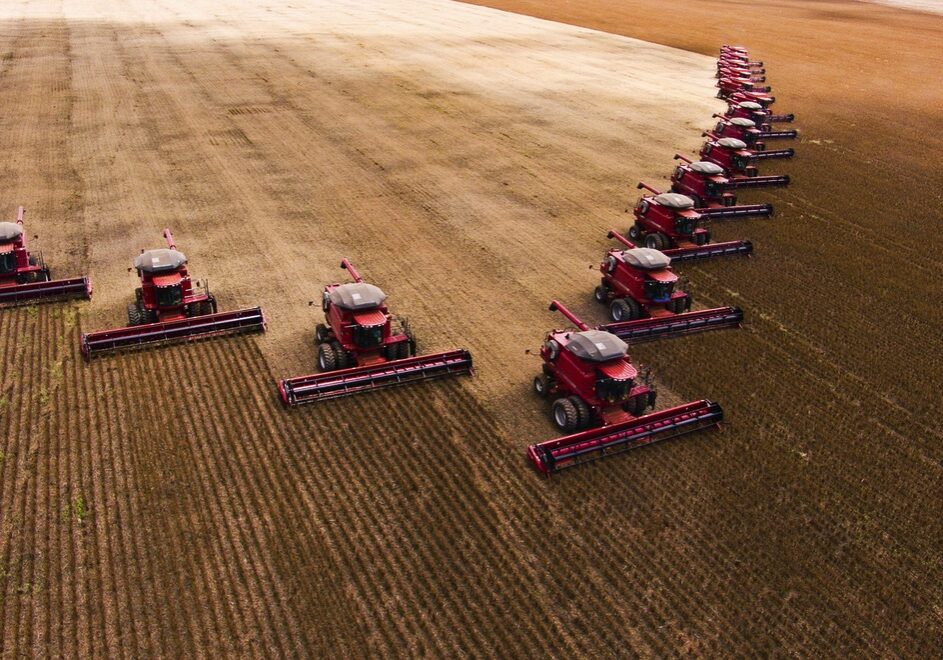
Video: How to change the future of our food
The food we eat has a huge impact on nature, but individuals and industry can change this. We asked farmers and food experts for their views on the future of food
